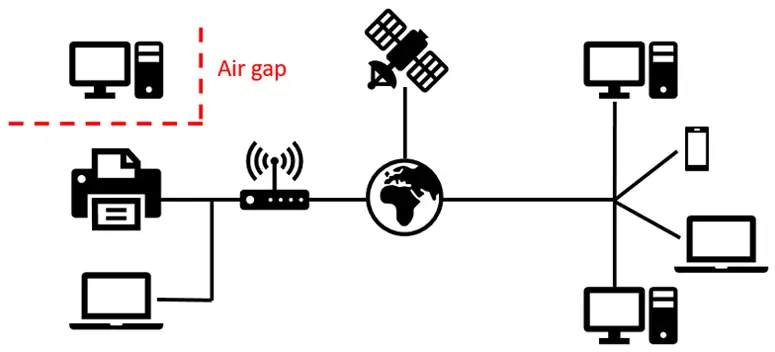Welcome to the Web3 world, where digital finance and applications are shown in a revolutionary way through the fusion of blockchain technology, cryptocurrencies, and a pioneering spirit. Are you overwhelmed by the wealth of terms in the Web3 world that you don’t understand? Are those slangs barriers for you to learn about Web3? Don’t worry! We’re here to explain the obscure terms to guide your learning. Today, we're diving into an exciting development in the world of Web3: [Air-gapping].
Air-gapping in Web3 refers to the practice of isolating a computer or device from any form of network connectivity to ensure maximum security. This technique is used to protect sensitive data and operations from cyber threats by preventing any form of external access. In the context of blockchain and cryptocurrencies, air-gapped systems are often employed to securely manage private keys and sign transactions offline.
Air-gapping involves setting up a device that is never connected to the internet or any network. This device, often a computer or hardware wallet, is used to store private keys and sign transactions. To interact with the blockchain, data is transferred between the air-gapped device and an online device using secure, physical methods such as USB drives or QR codes.
1.Private Key Security: By keeping private keys on an air-gapped device, users ensure that these keys are never exposed to the internet, significantly reducing the risk of hacking.
2.Offline Transaction Signing: Users can prepare transactions on an online device, transfer them to the air-gapped device for signing, and then transfer the signed transaction back to the online device for broadcasting to the blockchain.
3.Data Isolation: Ensures that sensitive data and operations are completely isolated from potential online threats, providing a high level of security.
●Cold Wallets: Air-gapped devices are commonly used in cold wallets, which are used to store cryptocurrencies offline for long-term security. ●High-Security Environments: Organizations dealing with large amounts of cryptocurrencies or sensitive data may use air-gapped systems to protect their digital assets.
●Secure Signing Operations: Air-gapped devices are used for secure signing of transactions in environments where security is a top priority.
Importance in Web3 Ecosystem
Air-gapping is critical for ensuring the highest level of security in the Web3 ecosystem. It protects against a wide range of cyber threats, including malware, phishing, and remote attacks. By keeping private keys and sensitive operations offline, air-gapped systems help maintain the integrity and confidentiality of digital assets.
User Experience and Innovations
While air-gapping provides unparalleled security, it can also introduce challenges related to convenience and usability. Innovations such as user-friendly interfaces for transferring data securely between online and offline devices, as well as improved methods for signing transactions offline, are helping to mitigate these challenges. Hardware wallets with air-gapped capabilities are becoming more sophisticated, offering enhanced security features while maintaining ease of use.
Despite its robust security advantages, air-gapping has its own set of challenges:
●Usability: Transferring data between air-gapped and online devices can be cumbersome and time-consuming.
●Human Error: The process of manually transferring data introduces the risk of human error, which can compromise security.
●Physical Security: Ensuring the physical security of the air-gapped device itself is crucial, as physical access could potentially lead to security breaches.
Air-gapping is a fundamental security practice in the Web3 space, offering unparalleled protection for private keys and sensitive operations by isolating them from network threats. As the Web3 ecosystem continues to evolve, the role of air-gapping in safeguarding digital assets will remain pivotal. Through continuous innovation and improved user experiences, air-gapping will continue to provide a robust security framework, empowering users to confidently navigate the decentralized digital economy. Air-gapping is not just a technical measure; it is a cornerstone of security in the world of blockchain and cryptocurrencies.

